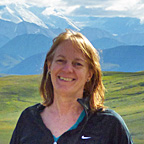I was recently in western Massachusetts and visited two distinct “literary” sites. One was old, Edith Wharton’s fabulous house, The Mount, built at the turn of the century. It offered a fascinating look into the life and times of this remarkable woman. The other site was new, founded in 1980. It is the Yiddish Book Center, a growing collection of more than 1,000,000 (yes, one million) books published in Yiddish. These two sites had more in common than location.
I’ll be the first to confess that the idea of visiting a collection of Yiddish books wouldn’t be my first choice for a fun way to spend an afternoon. The only thing I knew about Yiddish was that a lot of Jews used to speak it. Right? Even most Jewish leaders considered Yiddish “dead.” But the front desk man at Amherst’s venerable Lord Jeffrey Inn insisted The Yiddish Book Center was worth the trip. And it was.
It all started with one young graduate student named Aaron Lansky who realized that Yiddish was fading away as surely as the older generation who spoke it. These elders had cherished their books, many bringing them with them from the old country, saving the books over other items. But their children and grandchildren didn’t know what to do with the books that they couldn’t read. Books were being destroyed, no longer wanted.
Lansky put up flyers asking for Yiddish books. The response was overwhelming. Lansky received not only donations but letters from elderly Jews asking him to come get their books. He’d not only get their books, they’d tell him their stories. Lansky found himself not just saving print books, but rescuing a world that was vanishing. They weren’t just handing him their books; they were handing him an inheritance.
These Yiddish books do more than just sit on shelves. The books have inspired a worldwide enthusiasm for renewing the Yiddish language. Now it is the younger generation that is learning the “dead” language. And people like me are learning about the Yiddish culture. Who would have guessed that print books could lead to this?
Edith Wharton’s estate, The Mount, of course, has an intimate bond with the literary world. Wharton wrote forty books in forty years. She was the first woman to win the Pulitzer. She designed The Mount. When visiting it, you feel you’ve become her guest, and can envision her enjoying the gardens she designed.
But the room that offers the most insight into Edith Wharton and the tangible value of print books is her library. When Wharton’s marriage fell apart, she left the Mount, taking her beloved collection of books with her across the Atlantic. After her death in 1937, the collection was split. Some were destroyed in London in World War II. Eventually, one man dedicated himself to taking on the guardianship of Wharton’s remaining books. To make a long story short, (find out more here) the collection was sold back to The Mount in 2005, and now once again fill Wharton’s bookshelves. One man saved them all those years.
The books not only show the breadth of her interests and passions, but the unique personal connection to history. One book is signed by Theodore Roosevelt. Others by Henry James. As a child, Wharton was drawn to books, taking them off the shelves, holding them before she was old enough to read. Having books at hand influenced not only her life, but those of her future readers.
Don’t get me wrong. Ebooks are a boon to both writers and readers. My thriller novel would still be waiting for publication, not on best seller lists both in the U.S. and abroad, if not for the invention and popularity of E-readers and indie publishing. But when people predict that print books will become a thing of the past, remember that being a thing of the past is the very thing that makes them invaluable.
Do you have a story to share about how print books have influenced your life? I’d love to hear it.


Agreed. There’s nothing like a personal library or an old book to capture the personality of someone long gone.
LikeLike
Thanks, Annette. I wonder sometimes if ebooks will affect future generations’ insights into today’s authors.
LikeLike
Thanks for sharing my post. As you show in your blog, Yiddish is a beautiful language. I’m glad it’s being revived.
LikeLike
Nishtah forvoss! (You’re welcome!) Yiddish is indeed an entirely different way of thinking, linguistically.
LikeLike
Thanks for sharing this post! I was just talking the other night about this post with a friend who collects first editions. Then, last night, at a gathering at our home, the first thing a neighbor noticed through our front window was our bookcase. He told me that he said to his wife, “These are people who love books.” It made for an instant connection. I love ebooks and the success I’ve had through ebooks, but print books are here to stay in my house.
LikeLike